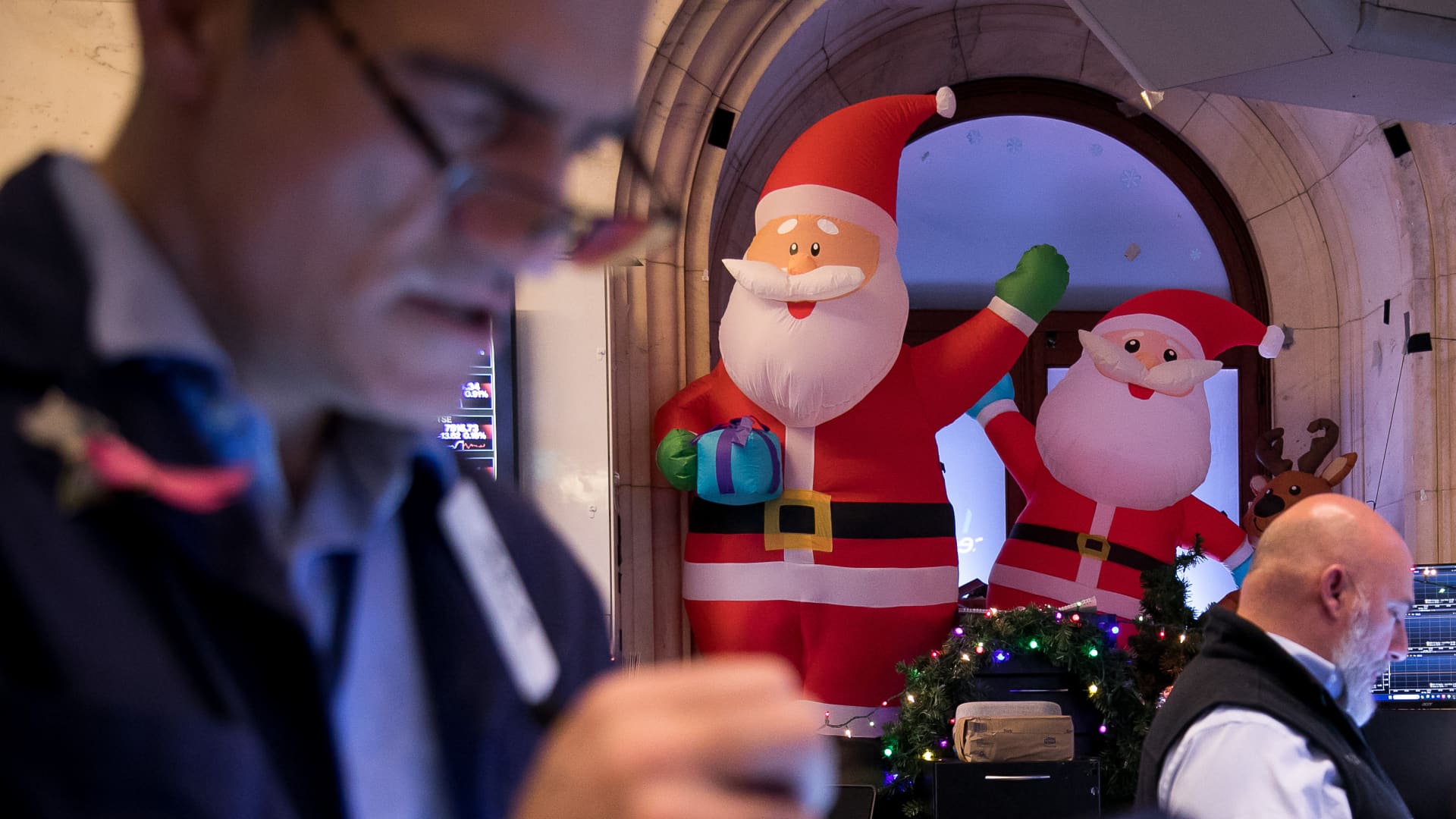The Santa Claus rally is in trouble. That’s the tendency for the stock market to rise on the last five days of the old year, and the first two days of the new year — typically good for a gain of 1.3%, and historically the best seven-consecutive-day period of the year. But not so far. With one day left in the trade, the S & P 500 is down 0.1% in the past six days. The effect’s most important use is not as a trading vehicle, but as an indicator, specifically what happens if the S & P is negative during this seven-day period. “Santa’s failure to show tends to precede bear markets, or times stocks could be purchased later in the year at much lower prices,” Jeff Hirsch writes in the Stock Trader’s Almanac. Fortunately, a negative Santa Claus rally period doesn’t happen very often, only 12 times since 1969 — less than 25% of the time. Still, don’t get too attached to indicators. Tom McClellan, also a sharp market watcher, noted that in years when the Santa Claus rally period is down, the market has been down only 40% of the time in the calendar year that followed. That means the market is up 60% of the time after the Santa Claus rally period is down, only mildly worse than the roughly 75% of the time the market rises year over year. Speaking of seasonal indicators, we are in the middle of several others, including the First Five Days “Early Warning” System. Hirsch notes that in presidential election years, this indicator has a respectable record. In the last 18 election years, 15 full years followed the direction of the First Five Days. That’s an 83% success rate. Then there’s the famous January barometer that states, “as goes January so goes the year.” Hirsch notes it came into effect in 1934 after the Twentieth Amendment moved the date that new Congresses convene to the first week of January and presidential inaugurations to Jan. 20. It has a respectable 83.6% accuracy rate, with 12 major errors since 1950. However, the full-month January barometer has a softer record in election years, with 12 of the last 18 full years following January’s direction. Election effect Finally, there are the elections. In the U.S., election years with a sitting president tend to be stronger. Dan Clifton at Strategas has noted that the S & P 500, measured on a total return basis, has increased in every presidential reelection year since 1944. “That is 16 out of 16 years, which includes years with recessions, like 2020,” Clifton notes. The outperformance is notable: The S & P tends to be stronger by 1.3% on average. This happens because elected officials who are in office have some levers they can pull to keep the economy going. Clifton notes that the Biden administration has already pulled some, including the Treasury’s November decision not to increase long-term debt issuance but to finance the deficit with more T-bills instead. “We expect Treasury to pass the baton to the Fed in 2024 with the Fed expected to cut rates multiple times in 2024,” Clifton noted. But the U.S. isn’t the only country facing an election. There are 40 national elections in 2024, according to Bloomberg, including Mexico, India, Taiwan, Pakistan, Indonesia, South Africa and Tunisia. “To the extent to which nearly 80% of the world’s market capitalization will face a national election of some sort this year, fiscal and monetary policy makers will have a strong incentive to seek policies to avoid recessions regardless of cost,” Jason Trennert from Strategas wrote in a recent note to clients. There’s also a downside: It creates the potential for elected officials to attempt to score political points by taking provocative and confrontational positions.
